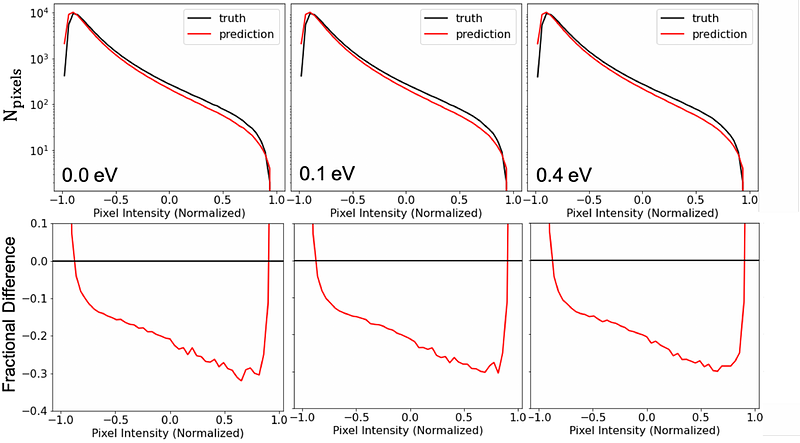nuGAN: Generative Adversarial Emulator for Cosmic Web with Neutrinos

nuGAN: Generative Adversarial Emulator for Cosmic Web with Neutrinos
Neerav Kaushal, Elena Giusarma, Mauricio Reyes
AbstractUnderstanding the impact of neutrino masses on the evolution of Universe is a crucial aspect of modern cosmology. Due to their large free streaming lengths, neutrinos significantly influence the formation of cosmic structures at non-linear scales. To maximize the information yield from current and future galaxy surveys, it is essential to generate precise theoretical predictions of structure formation. One approach to achieve this is by running large sets of cosmological numerical simulations, which is a computationally intensive process. In this study, we propose a deep learning-based generative adversarial network (GAN) model to emulate the Universe for a variety of neutrino masses. Our model called $\nu$GAN (for neutrino GAN) is able to generate 2D cosmic webs of the Universe for a number of neutrino masses ranging from 0.0 eV to 0.4 eV. The generated maps exhibit statistical independence, lack correlations with training data, and very closely resemble the distribution of matter in true maps. We assess the accuracy of our results both visually and through key statistics used in cosmology and computer vision analyses. Our results indicate that samples generated by $\nu$GAN are accurate within a 5% error on power spectrum between k=0.01 to k=0.5 h/Mpc. Although this accuracy covers the mildly non-linear scales, consistent with other works and observations, achieving higher accuracy at fully non-linear scales requires more sophisticated models, such as diffusion models. Nevertheless, our work opens up new avenues for building emulators to generate fast and massive neutrino simulations, potentially revolutionizing cosmological predictions and analyses. This work serves as a proof-of-concept, paving the way for future extensions with higher-resolution 3D data and advanced generative models.